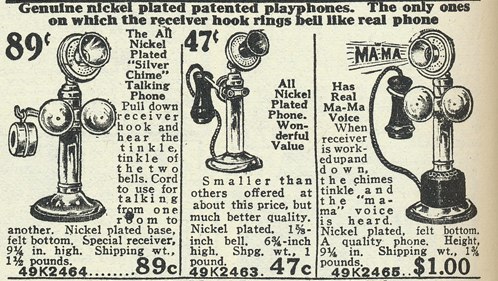I’d like to share with you a few thoughts about tech recruiting. This is not a post about how to write resumes, read resumes, ask or answer tech interview questions. Enough is written on the subject by people who are better at all of this than me. No, it’s about that email that arrives in almost every developer’s inbox about “a full-time, permanent position with a very competitive salary” for “a very prestigious company located in mid/down/up-town” which is looking for “an alphabet soup of technologies”. Half the time it’s a phone call. These happen during the times of boom and bust in the tech sector, although with varying frequency.
Now, people who are not programmers would probably think that this is spammers or scammers who will ask for a fee. Well, there is a fee involved, but this is not scammers: every time there’s a reasonably well paying job involved. A huge number of programming positions gets filled this way.
There’s always a shortage of decent software developers, project managers, system administrators and allied tradespeople. This was true back when I was starting my career, in 1997, but it only got worse. First of all the cost of running a startup came down from hundreds of thousands of dollars to thousands, and many talented programmers with ideas, tolerance of Ramen-heavy diet, slumming, and a little risk exited the corporate workforce to build url shorteners and travel sites for hipsters. Top notch people with kids and/or love of brightly colored furniture and fridges stocked with fancy sodas were vacuumed up by Google, Microsoft, Facebook, Yahoo and other modern Xerox Parc-wannabees. The hedge funds sucked in all those who are good at implementing complicated formulas and algorithms in code that can make a Kessel run in 12 parsecs or less.
The biggies look for a healthy mix of specialists, but they can easily afford to hire jack-of-all trades hackers. Everybody else usually looks for a person who has proven experience with a certain “stack” – an alphabet soup of languages, operating systems, and servers. Sometimes stacks are ageless like COBOL, CICS, DB2 – even today typing it into dice.com brings up 155 results. Some come out of favor: LISP – only 16 results though. Somer are old standbys: Php MySQL Apache – 370 results: C# SQL Server IIS – 439 results. Some, like RoR are up and coming – 93 results.
If you are relatively young(cheaper that way) and have done some work with a fashionable stack your phone will be ringing weekly with recruiter calls in the dreariest days of a tech bubble burst. If you are a specialist who deals with a particularly gnarly piece of hot tech – it will ring a few times a week.
Now here we come to a somewhat interesting phenomenon. Most of the time the person calling is a “headhunter”. Here’s what’s happening:
Web department in company Webco Enterprises has an opening. It could be caused by a number of things, but most commonly
1) after gettig tired of incessant complaining of the VP of Web Things, the Bean Counter finally agreed to budget in Y dollars for another headcount.
2) an experienced headcount who was making Y dollars accepted an offer of Y + $30,000 + an office with a door from company iWeb 2.0 and left.
So here is VP of Web Things with a budget of Y dollars. She’s swamped with work. In the next team meeting she tells her nerds to ask all of their friends if they know somebody and offers a referral bonus. Next she puts together a typical job ad complete with technological alphabet soup and takes it to the Master of HR. The Master of HR posts it on the company intranet, on the corporate site and on monster.com, dice.com, etc. Next VPoWT goes to the same sites and looks for candidates who posted their resumes there. It’s mostly drek, and the one person who might be ok wastes a lot of her time because he has another offer for Y + $10,000 from another company.
Now more desperate, she starts using “headhunters”. They send a couple of somewhat crappy candidates, followed by one barely ok one, followed by one who’s good enough. After a little song and dance the good one accepts Y dollars per year minus – 15% that silently go to the recruiter. The next few years he’ll be getting modest raises and maybe even a bonus or two that will not break the budget: the Bean Counter approved Y dollars, and it stays in the budget like that, and the headhunter only gets paid once.
Now, here’s what was happening on the other end: headhunters start pounding searches into their computers. LinkedIn, all recruiting sites, internal databases, etc. They might not understand what those letters in the alphabet soup mean, but they sure can try to match them up with what comes back from searches. Then they start shooting in the dark – it’s easier to get people who are currently looking for jobs, but it’s the shallow end of the pool that VP of Web Things already explored somewhat. They start pinging people who are working at the moment – this is where the good heads are.
Finally someone hunts up the the right head for VPoWT’s headcount and pockets the 15% of a yearly salary of that head.
Now, here comes the interesting part: most of these headhunters who are calling are trying to line up publicly available job listings with people on LinkedIn. For instance, I recently received two emails about a rather awkwardly named position “Director of Back End Development” (second recruiter spelled it “Backend”).
I looked it up on one of the recruiting sites (I think dice.com), and it was an old and infamous pre-dot-com-boom company that chose such a unique job title for what I do for a living. It was literally the only one with that creative title. I could have applied directly, bypassing the 15% headhunter’s fee. This is the reason why headhunters rarely name the company name.
In the past, through my random and numerous connections I’ve heard stories about what the setup is like at that place, and it’s a doozy. I’m pretty sure that the person who will take that job will take a lot of development up his or her back end.
The moral of the story is this: it’s easy enough to bypass recruiters – they are just engaged in arbitrage: the hiring manager is busy, the potential headcount is not even looking. That 15% is OPM (other people’s money) to the hiring managers, but not so much to the headcounts.









